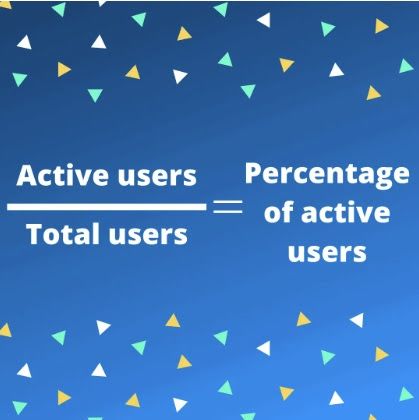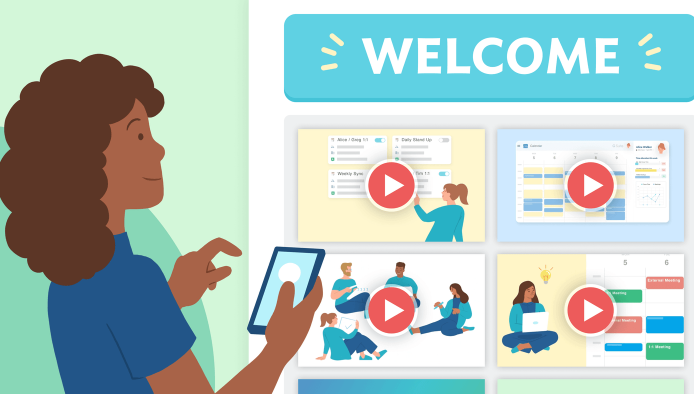How well are you engaging your users? Do you know how to empirically answer this question?
If you don’t, this is the article for you.
Even if you already know how to measure engagement, you should scroll further down for our tips to improve engagement because there is always room for improvement.
When it comes down to it, how well you are engaging your users will determine whether you succeed or fail as a business, so this is a must-read for anyone serious about user engagement.
What Is User Engagement?

Source: Search Engine Journal
User engagement measures how users or customers are interacting with a business’s digital offering.
Whether this offering is a website, a mobile app, or a service, user engagement measures the length, frequency, and level of interaction to determine how well it is performing in the market.
In essence, the engagement score is a reflection of the quality of the customer journey your users are on, the customer experience you have created, and the overall customer satisfaction which can then affect customer loyalty and customer retention.
The goal of customer engagement is to assess how well an offering and its content are resonating with people.
By knowing the offering’s strengths and weaknesses, companies can adjust and update their products and overall customer engagement strategy accordingly.
How Is User Engagement Calculated?
The basic formula for calculating user engagement is:
Number of Active Users During a Given Period of Time / Total Number of Users
Depending on the digital offering in question, user engagement and the metrics considered will be different. Here are a few examples of user engagement metrics or the user behavior to track for the most common types of digital offerings:
- Website user engagement metrics: pageviews, time on page, bounce rate, exit rate, click-through rate (CTR), and conversion rate.
- App user engagement metrics: daily and monthly active users (DAU and MAU), session duration, session interval, retention rate, conversion rate, and churn rate.
- Social media user engagement metrics: likes, shares, comments, mentions/tags, and follower growth.
For these different offerings, the engagement rate takes into account all these metrics, resulting in a percentage that is reflective of overall engagement performance.
With these different metrics, companies can get a sense of not only how many engaged users they have, but the user activity and user behaviors.
Important User Engagement Metrics
Here is a deeper look at five important user engagement metrics. These user or customer engagement metrics come together to reveal the actual product engagement and product experience.
Total Users
This metric represents the number of users who have signed up for a product or service at any point in time.
The number of total users includes both old and new users as well as active and inactive users, regardless of their current activity level.
Example: The number of total users for a mobile app game includes all app users who have ever downloaded the game even if they no longer play it now.
Active Users
This metric represents the number of users who have used the product or service within a specified period of time.

Source: Parlor
Unlike total users, the active users metric excludes users who are inactive during the period of time that the marketing team or the product team is looking at.
Example: In gaming, developers often look at DAU and MAU. These are the users who have been active and taken a specific action in the app during a particular day or month, respectively.
Engaged Users

Source: Codefuel
This metric represents the number of users who are actively engaging with the product or service.
While active users and engaged users may seem similar, the latter represents individuals who are more invested in the offering. They may be sharing their user experience on social media, making in-app purchases, etc.
Example: Engaged users of a game are those who share their gaming milestones, such as unlocking a new level, with their friends on social media. These individuals are more likely to recommend the gaming app to their friends, thus increasing the app’s net promoter score.
Upgrade Conversion Rate

Source: Capsule
This metric represents the percentage of users who upgrade from the free version of a product to a paid version, with more features and fewer limitations.
This conversion rate is especially important because it shows whether people find the product useful enough to want to spend money on it. A monetary investment in the product is a good indicator of satisfied and loyal customers.
Example: Developers of games or apps that have both a free and paid or premium version will track their upgrade conversion rates.
Classic examples of these apps in the real world include Spotify and YouTube, both of which users can download and use for free but can also get on a paid subscription model to access more features and navigate the apps without ads.
Time in Product
As its name suggests, this is the amount of time a user is spending with the product.
This metric is closely related to the above metrics of “active users” and “engaged users” as the actual time spent is telling how active and engaged the users are.
The time in product is especially meaningful to the product team. If users are spending a large amount of time with a product, it may suggest that they find it engaging and valuable. If users are accessing the product and then quickly exiting, it may suggest issues with the UI/UX.
These are all indirect feedback that the product team can use to improve the product and thus customer satisfaction and customer success.
Example: A way to gauge app engagement is how long users spend in the app. If they are constantly scrolling through it and posting on it, as is the case with Instagram and TikTok, it means the app and its overall design to engage with users is successful.
6 Ways to Improve User Engagement
Improve Onboarding

A key tenet of product design and customer success is ensuring a smooth onboarding. Let’s not give users a reason to quit your product before they have even been onboarded.
Improve the onboarding experience by making it interactive, employing visuals, and offering guidance where needed.
If the product is an app or a game, the onboarding should be relatively straightforward. Prompt users to try out the different features and functions and let them explore the product so they feel true ownership towards it.
If it is a solution platform, the onboarding may require a more thorough introduction to the product features and how to use them. For the best user experience, have an actual product expert or customer success manager walk users through the solution.
Make the Product Super Easy to Use
Part of what makes a product appealing to users is that it is easy to use.
Easy to use means that the product can do exactly what it promises in a very intuitive manner.
Think about the dating app, Tinder. Users swipe right or left to match and chat when there is a match.
There is not much more to it than that, and that is part of its global appeal.
When the UI/UX team is designing the product interface and user experience, they need to put themselves in their users’ shoes.
What is the most intuitive way that a user will go from point A to point B on your website? How does a certain design shorten the time it takes for a user to accomplish their goal on a software?
These are questions that must be asked and answered repeatedly as companies put out new iterations of their products that make them easier to use.
Add More Features
This is one tip that comes with a caveat. You should add more features to your product to make it more powerful, but you need to add them with purpose.
Before you roll out new features blindly, which companies have done much to the chagrin of their users, get some information on how current features are performing.
Leverage an analytics software to understand user behavior when using your product and solicit user feedback to understand what new features they may be looking for.
Only by understanding the current state of feature adoption will you be able to decide between introducing new features and improving on existing features. Then you can make the right choice that will truly benefit users.
Provide Live Chat
Live chats are an instant way to provide customer service and support to those with a question or issue.
They imitate the in-person experience of having a store clerk or customer support agent help you in real-time.
As mentioned in the subsection about onboarding, certain solutions require more guidance and support. This is where live chats come in handy, even after onboarding.
While the appeal of live chats is speaking with a human agent, the rise of powerful AI technology, such as ChatGPT, can make conversational marketing tools or chatbots more effective in helping users with their issues.
Offer Product Alerts
Product alerts are notifications that let users know about a significant development with the product and reminds them to return to check it out.
These may be a new feature alert, a free gift message, or something else, and can take the form of an email, push notification, or text message.
Product alerts are useful for customer engagement marketing as long as they are deployed sparingly with discretion.
Of course, just as it is important to offer product alerts, it is equally important to give users the option to turn these alerts off.
Some users simply do not want to receive alerts, and the best way to guarantee their user experience is by allowing them to turn the alerts off.
Provide Detailed Help Content
Even with an onboarding process and live chats, customers may still require additional help content — something they can study on their own when they have time.
There are so many ways a company can provide detailed help content.
You can start a FAQs page, a product-focused blog, a product tutorial video, a social media demo account, or many other things.
Help content is actually a great opportunity to create evergreen content that not only helps your existing users but may catch the attention of potential users.
The content can be used in marketing campaigns such as email marketing or digital/social media marketing, thus serving two important purposes that contribute to business success.
Key Takeaway
User engagement is an extremely important measure of how successful your product or service is with your users.
There is no end to improving user engagement, especially as your company keeps growing.
If you want to start measuring your user engagement, give an analytics solution a try to get a sense of how you’re doing.
By knowing where you currently stand with analytics, you will have the knowledge and insights to improve your product offering and customer experience.


